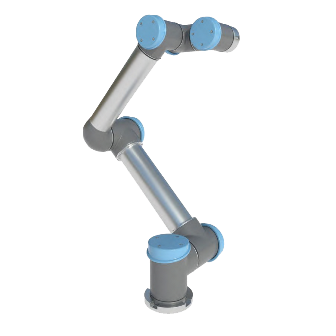Quality control is a process or set of processes used to ensure a defined set of criteria is met in a manufactured product. Common quality control processes involve inspection and product testing. Quality control is critical to the success of a product as it effects the longevity and reliability of manufactured goods. It is also important for customer satisfaction. Poor quality products are likely to break or malfunction leaving dissatisfied customers. In some instances, it can even mean the difference between life and death as is the case with automotive parts.
Manual quality control processes can be inconsistent and extremely error prone. These processes tend to be highly repetitive and require great concentration. Humans can easily fatigue from the repetitiveness of quality control processes causing them to lose focus and for flaws or defects to go easily missed. There are also some defects that are just too small for the human eye to detect. Fortunately, quality control processes are ideal for robotic automation. Industrial robots are capable of accurately and thoroughly inspecting products ensuring flaws are not missed. While traditional robots like the FANUC LR Mate 200ic have been used in the past for quality control processes now many are implementing collaborative robots instead.
Collaborative robots, or cobots for short, have emerged as a more affordable and user-friendly alternative to traditional articulated robots. They are making quality control automation more accessible with their low cost. One of the main deterrents from quality control automation was the cost. Now with the Universal UR10 and other cobots, automating these processes is feasible to companies of all sizes, particularly small to medium manufacturers.
Integrating collaborative robots with 2D or 3D vision allows them to automate inspection applications. The FANUC Cr-7ia with vision can thoroughly scan all aspects of a part ensuring no defects, even microscopic ones, are not missed. Collaborative robot quality control improves the reliability and consistency of inspection processes. Defective or flawed parts are caught before they are shipped to customers. Inspection cobots are already being used by manufacturers in the automotive, metal fabrication, agriculture, food, beverage, and transportation industries.
The light weight and compact design of collaborative robots allows them to be easily moved around factories for greater flexibility. When the Universal UR5 is finished inspecting at one workstation it can quickly be moved to another to inspect a different set of parts. They can also be mounted on a tabletop for better part access for inspections. Their small footprint allows them to operate in tight spaces without interference.
The intuitive operation of collaborative robots eliminates the cost and learning curve associated with traditional robotic systems. Hand guidance allows for quick programming by any user regardless of robotic experience. Cobots can be quickly redeployed for new inspections allowing those with high changeover to automate. Collaborative robots provide a plug and play operation with minimal setup time.
Automating inspection processes with collaborative robots improves quality control measures. All products are thoroughly inspected ensuring strict quality standards are met for greater product reliability, the mitigation of defective parts, and improved customer satisfaction.
Robots Done Right |
Used Robot Sales |
Collaborative Robots for Quality Control

Robots Done Right is the place to start when it comes to used robots. Contact us if you are interested in buying or selling your used robot.